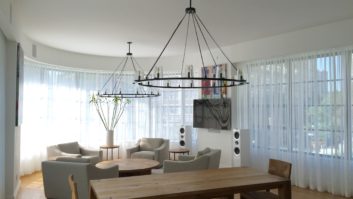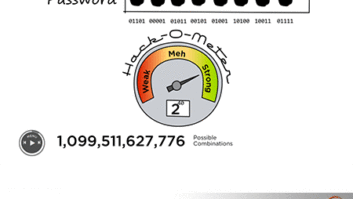Recently, some prominent and thoughtful industry voices have posed the question of whether the residential middle market is doomed. It’s an understandable anxiety. The middle market faces pressure from the proliferation of “DIY” smart home devices; rising prices and supply chain issues that leave smaller projects out in the cold; and the specter of intertwined inflation and economic recession squeezing discretionary spending of every kind. Faced with these challenges, the luxury and uber-luxury markets seem like a warm place to shelter from economic storms.

When storms threaten, though, sailors have two choices: get back to safe harbor but make no progress, or put the wind at their backs and risk going farther and faster than ever before. Within Vanco, we’re seeing indications that now is an excellent time to pursue opportunities in the mid-market — provided integrators are willing to go beyond their previously charted courses.
Defining the Mid-Market
The term “mid-market” means different things to different integrators. For the purposes of this discussion, I’m borrowing definitions from CEDIA’s 2021 Integrated Home Market Analysis (IHMA), released in the spring of 2022. Respondents to the IHMA said that they served the following markets:
- Uber-luxury (the world’s most elite estates) – 17 percent
- Luxury (small subset of homes in the most desirable areas of a given location) – 79 percent
- Mid-Market (homes with an above average sales price for their location, but not within the more elite “luxury” category) – 40 percent
- Mass-Market (homes with an average price for their location or lower) – 6 percent
These numbers suggest a market with untapped opportunity. A healthy minority of integrators are doing some amount of mid-market work. Compare that to the mass market, which only a tiny fraction of integrators work, or the uber-luxury category, where there just aren’t that many available jobs. The mid-market tier is clearly a large addressable customer base, but the majority of integrators aren’t working in this area.
The IHMA also indicates that home integration projects are becoming more accessible in terms of price. The average project price fell 17 percent from 2014 to 2021, even as revenues for integrators rose. There are a few interrelated causes for this. Integrators in general are taking on more frequent, smaller projects, and there’s been a decline in more expensive categories like whole-home control. We’re also experiencing a boom in add-on project categories like automated shading or outdoor audio. At this point, the average project cost for the small businesses that make up the bulk of the residential integration industry is $10-$15K. That’s well within the mid-market price range for home renovations, even if currently most of those systems are going into luxury homes.
Emerging Opportunities in the Mid-Market
This data tells me that rumors of the mid-market’s demise are greatly exaggerated. That begs the question: Where is the mid-market alive and well?
This year, I’ve been struck by the staying power of the “professionally integrated home office” trend. We’ve released a couple of products this year, like our EVEX4K41 Collaboration Switcher and our PA-CVB1 Conferencing Video Bar, that were designed for commercial use but have received a surprisingly warm embrace from the residential section. Pre-pandemic, it was uncommon to see professional videoconferencing equipment at the home of anyone other than a Fortune 500 executive. The number of people who work primarily from home has tripled since then, according to the U.S. Census Bureau. A lot of those people want a more sophisticated office than what they can cobble together themselves.
This is a perfect target market for residential integrators. Remote workers tend to be white collar and earn $3K above the local median for their job role on average. They are expected to spend a little of that extra cash on a high-quality home office setup. While they may have more money than average, they don’t necessarily have more time: Three-quarters of remote workers work more than 40 hours per week. This is a constituency that would deeply benefit from the expertise and services of the professional integration community to improve their daily work experience.
Related: Is the Middle Market Doomed?
Of course, while you’re upgrading a home office, there are myriad opportunities for upsells. A demographic that spends so much time inside their homes is likely open to finding new ways to enjoy their yards and outdoor spaces — a perfect opportunity to add on outdoor audio and video. You can also make sure they have ways to unwind with flexible media rooms and other multipurpose spaces. Set-top boxes may be disappearing, but that doesn’t necessarily mean they don’t need HDMI extension or distribution. Talk to families about their steaming and gaming habits: Twitch alone has over 140 million users. And the majority of them aren’t watching on a phone — people want to consume this media on a larger canvas, often communally. They benefit from more sophisticated HDMI extension with KVM that would allow them to easily connect a computer to their media room or home theater.
Stocking Up for Mid-Market Projects
In approaching the mid-market, integrators may need to broaden their horizons and develop some more flexible thinking habits. For example, these upper-middle-class households may not be willing to pay for a whole-home distributed audio system, but that doesn’t mean installed audio is off the table. A room-by-room approach relying on in-wall streaming or Wi-Fi amplifiers could be more cost-effective and appropriate to their needs. They might not have space for a dedicated home theater or music-listening area, but that doesn’t mean they’re not a candidate for high-performance installed audio — you just need to be prepared with an approach that limits sound bleedthrough across adjacent spaces. They might not be willing to pay more or wait long for the most recognizable brands in the industry, but there are many smaller brands with inventory and price points tuned to appeal to the mid-market.
The mid-market is vast. Integrators who approach it strategically can unlock a lot of jobs with great potential for growth, return business, and word-of-mouth recommendations. The key is to take it seriously as a market. Use the changing work styles of mid-market households as a stepping stone into the home — one that relies not on “nice-to-have” DIY devices, but essential professional capabilities. Research a product portfolio and develop solutions specifically with the mid-market in mind, engineered to make substantive improvements to daily work and relaxation at a palatable price point. Strive for simple, reliable solutions that you provide time and again without onerous overhead or service calls. It could be your business’ path to an undiscovered country of customers and projects.







